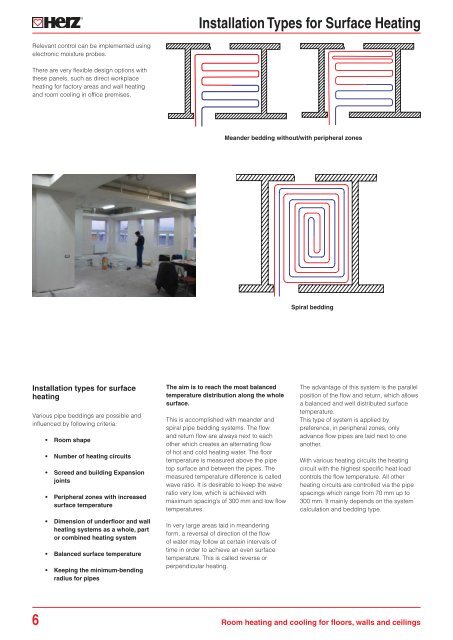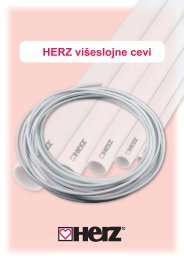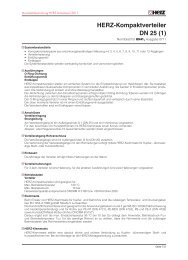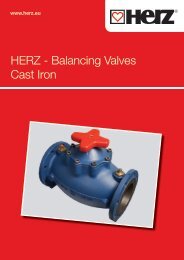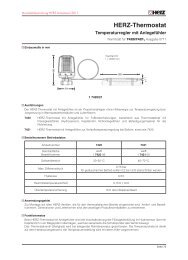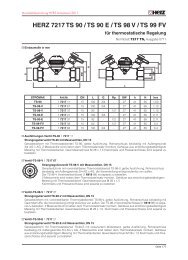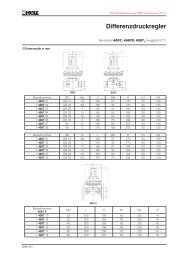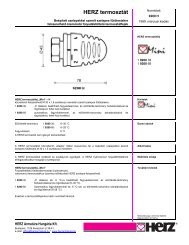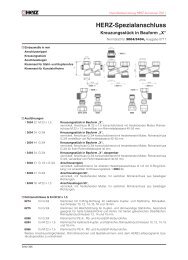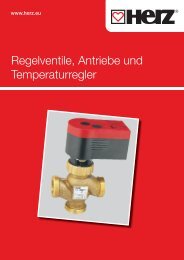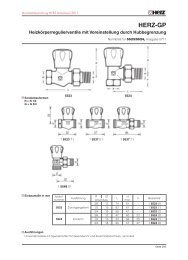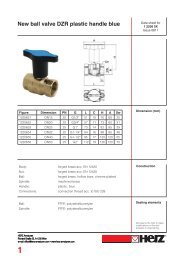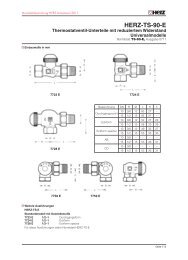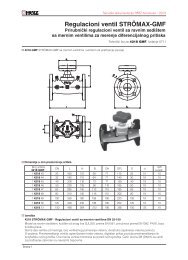HERZ laying system
HERZ laying system
HERZ laying system
You also want an ePaper? Increase the reach of your titles
YUMPU automatically turns print PDFs into web optimized ePapers that Google loves.
Installation Types for Surface Heating<br />
Relevant control can be implemented using<br />
electronic moisture probes.<br />
There are very flexible design options with<br />
these panels, such as direct workplace<br />
heating for factory areas and wall heating<br />
and room cooling in office premises.<br />
Meander bedding without/with peripheral zones<br />
Spiral bedding<br />
Installation types for surface<br />
heating<br />
Various pipe beddings are possible and<br />
influenced by following criteria:<br />
• Room shape<br />
• Number of heating circuits<br />
• Screed and building Expansion<br />
joints<br />
• Peripheral zones with increased<br />
surface temperature<br />
• Dimension of underfloor and wall<br />
heating <strong>system</strong>s as a whole, part<br />
or combined heating <strong>system</strong><br />
• Balanced surface temperature<br />
• Keeping the minimum-bending<br />
radius for pipes<br />
The aim is to reach the most balanced<br />
temperature distribution along the whole<br />
surface.<br />
This is accomplished with meander and<br />
spiral pipe bedding <strong>system</strong>s. The flow<br />
and return flow are always next to each<br />
other which creates an alternating flow<br />
of hot and cold heating water. The floor<br />
temperature is measured above the pipe<br />
top surface and between the pipes. The<br />
measured temperature difference is called<br />
wave ratio. It is desirable to keep the wave<br />
ratio very low, which is achieved with<br />
maximum spacing’s of 300 mm and low flow<br />
temperatures.<br />
In very large areas laid in meandering<br />
form, a reversal of direction of the flow<br />
of water may follow at certain intervals of<br />
time in order to achieve an even surface<br />
temperature. This is called reverse or<br />
perpendicular heating.<br />
The advantage of this <strong>system</strong> is the parallel<br />
position of the flow and return, which allows<br />
a balanced and well distributed surface<br />
temperature.<br />
This type of <strong>system</strong> is applied by<br />
preference, in peripheral zones, only<br />
advance flow pipes are laid next to one<br />
another.<br />
With various heating circuits the heating<br />
circuit with the highest specific heat load<br />
controls the flow temperature. All other<br />
heating circuits are controlled via the pipe<br />
spacings which range from 70 mm up to<br />
300 mm. It mainly depends on the <strong>system</strong><br />
calculation and bedding type.<br />
6<br />
Room heating and cooling for floors, walls and ceilings


